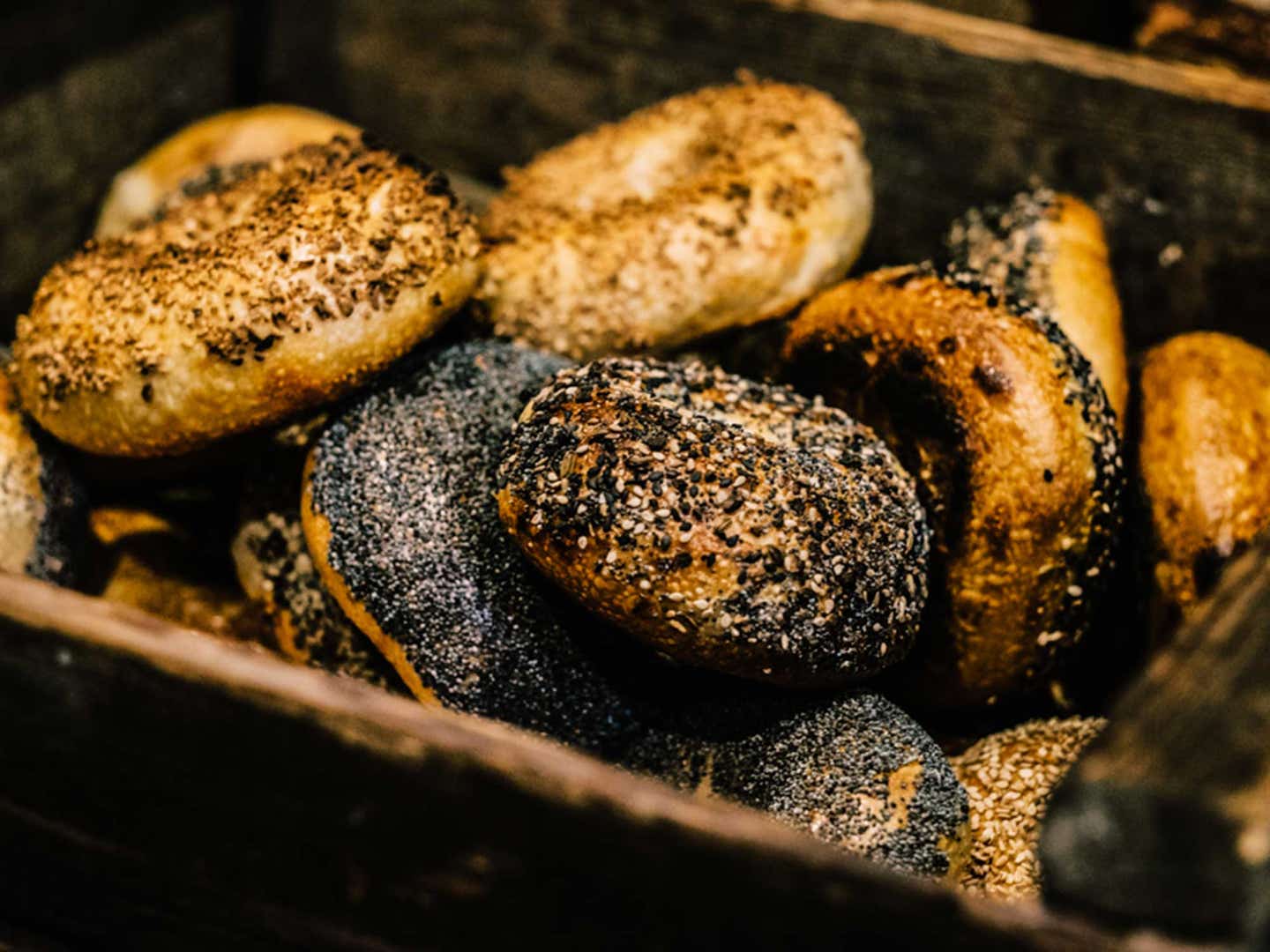
Is One of America’s Best Bagels in…Lewiston, Maine?
The wood-fired sourdough specimens at Forage Market are good enough to melt the heart of the most hardened New York bagel snob
I probably should have asked Father Paul Dumais for forgiveness right there in the back of Forage Market, while my mouth was still full.
Forgive me father, for I was kind of a jerk. When you invited me to meet you here to talk about Acadian ployes and try some really great bagels, I had the kinds of thoughts that make people think that New Yorkers and food snobs are the worst people in the world. Great bagels? You mean...for Maine?"
I am usually better than that. Finding brilliant food in unexpected places scratches the deepest of Chowhound itches, but doing so requires openness and trust. Discoveries are often of the small but memorable variety—a perfect plate of penne arrabiata in a Saskatchewan truck stop, or a bowl of pho in the outskirts of Rapid City, as nuanced as it was restorative. But burned by one too many doughy, leaden bagels that came with the promise of being "artisanal" or "authentic," I was incredulous, to say the least.
These were not just great bagels for Maine. They were great bagels for anywhere.
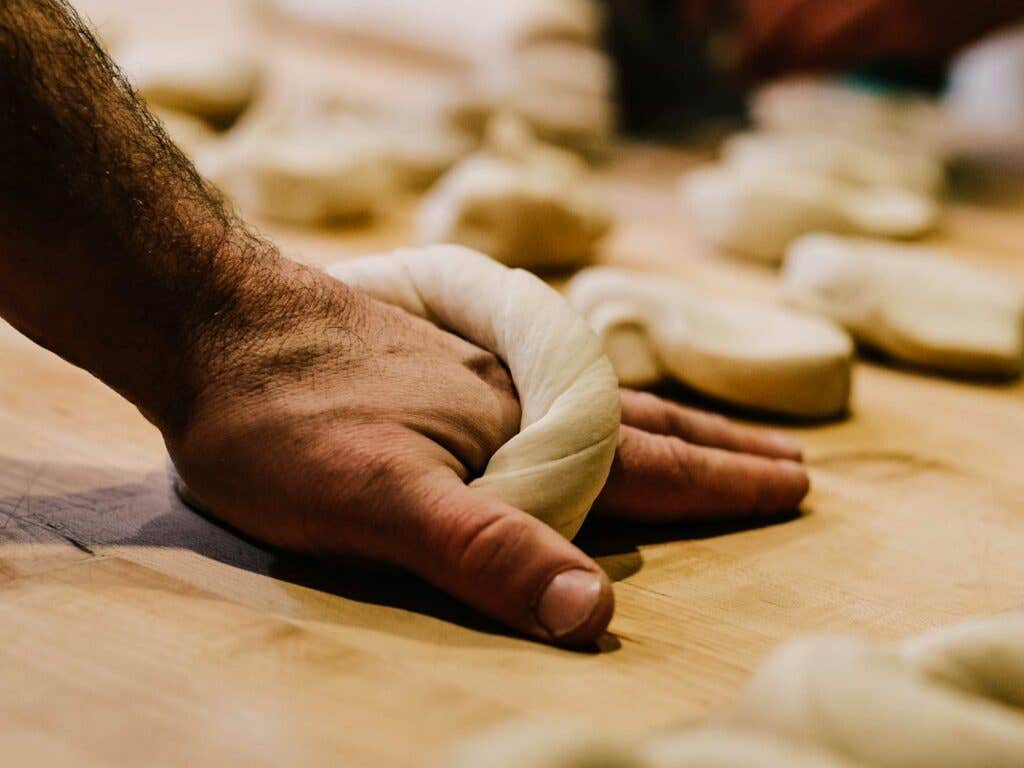
Forage Market is in Maine’s second largest city, Lewiston. It’s a former mill town that’s the home of Bates College, a small arts scene, a large hospital, and a WalMart distribution center. It was also the setting of the controversial rematch between Muhammad Ali and Sonny Liston more than half a century ago. That picture of Ali towering over the fallen Liston was shot here. Though it’s only about 45 minutes inland from Portland, it’s not really on the tourist map.
The shop itself is large with high pressed-tin ceilings, thrift shop tables and chairs, and a good selection of local and regional products like Bixby chocolate bars from Rockland and maple syrup from Frontier Sugar Works in Jackman, on Maine’s western border with Canada.
At the counter, I ordered a sesame bagel, split and buttered, not toasted (it was still warm enough to melt the butter, though.) It is appropriately palm sized—not a balloon—about four inches in diameter, and once you’re through that crust, you find an interior that is properly chewy and dense in an Old World way—not doughy and leaden how so many pretenders to the throne end up. Maybe because I had my guard up and my expectations down I wasn’t fully prepared for that first bite. It was the sound I remember most: a higher pitched crackle than I expected.
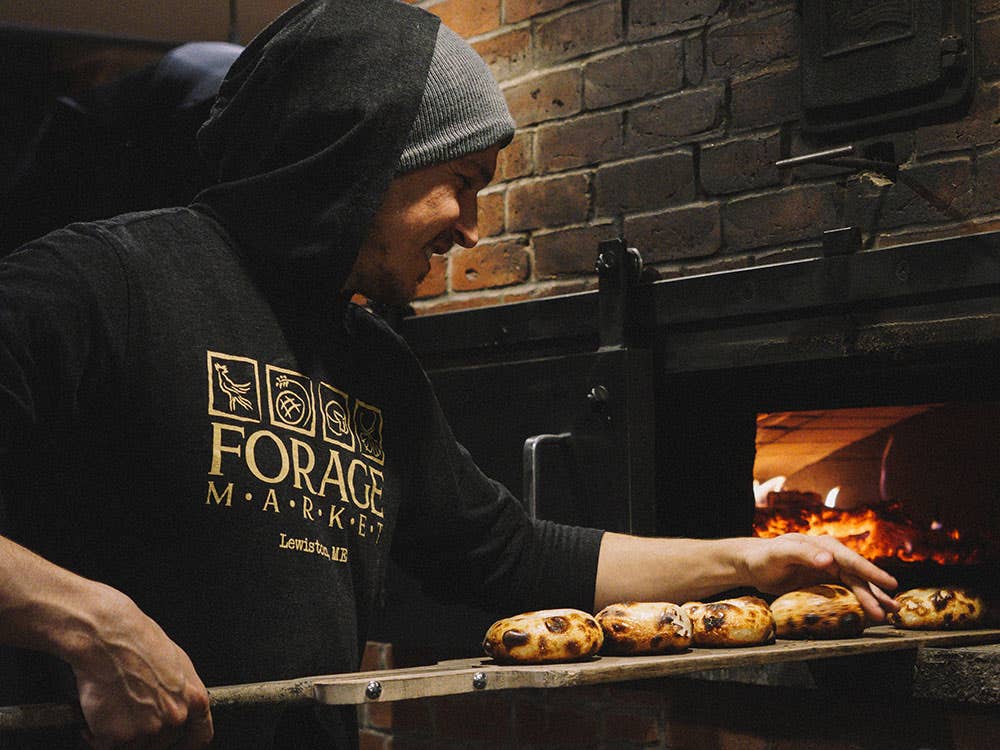
The goosebumped crust shattered in layers. First lightly; a thousand pinhead-sized bubbles fragmenting before the more substantial (though not tough) shell gives way with a more emphatic crunch. That crunch is where I first noticed how the bagel was unorthodox (some might say heretical) in two ways: it is made from a mildly tangy sourdough, and it is baked in a wood-fired brick oven.
The heady smell of butter and the tart whiff of sourdough blurred together into something almost feral. For a second, I felt disoriented, like I'd been pleasantly sucker punched. I teetered between thrill and resentment over that. These kinds of stories so often hinge on that One Bite—the one that lets loose a sloppy gush of emotion and metaphor, the bite that turns food from something that can be described to something that must be experienced. But I am, at heart, an empiricist—not someone who wants to lose their bearings over a bagel. I quickly gathered myself and set out to find why these bagels were so good, feelings be damned.
The next morning, I returned to talk with Gerald Walsh, the lead baker. Sitting at a table towards the back of the cafe, Walsh expounded with wonkish enthusiasm about hydration levels, yeast strains, and how giving the fermenting dough two days of refrigerated rest deepens the flavor of the finished product. His two-and-a-half-year-old daughter Maia, who had been sitting on lis lap gnawing on a plain bagel, tired of the science lesson and asked if we could go down to the basement to watch Al Alpizar, the baker on duty, in action.
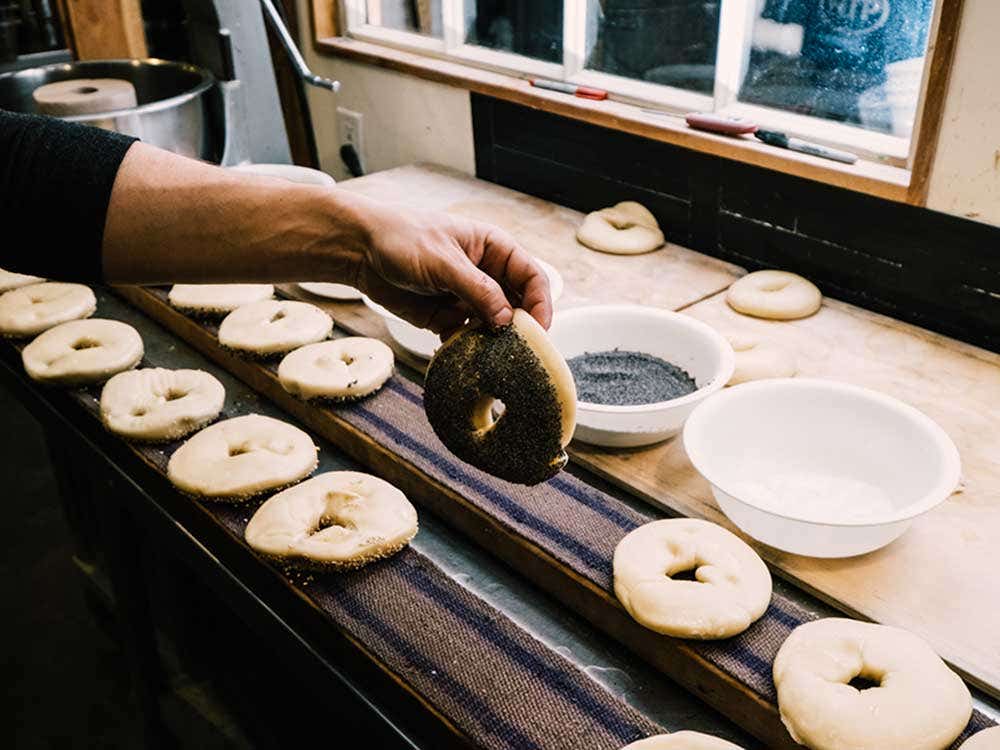
The operation downstairs looked in many ways more like a 19th century reenactment than a 21st century business. Craggy stone walls of the building’s foundation were exposed and lightly dusted in flour. Central was a large red brick oven with a black iron sliding door, and cordwood piled in an alcove beneath it. Buried somewhere on the bulletin board is a piece of paper inscribed with the word ‘autodidact.’ It was inspired, Forage owner Allen Smith later said, by the early books of Daniel Leader, one of the pioneers of the New Bread Movement. On the door track of the oven is a magnet with a cartoon picture of a French bread labeled douche baguette.
We watched as Alpizar took the proofed rolled bagels, two dozen at a time, and slid them into a vat of starchy boiling water next to the brick oven. While they boiled, he picked up a hatchet and split more wood to feed the fire banked along the oven’s left wall.
Freshly boiled bagels are fished out and laid on wooden boards then topped with coarse salt, sesame, garlic, and everything mix, or poppy, which has become something of an obsession for Smith. Poppy seeds that haven’t gone stale or a little rancid can be hard to find, he said, so when good ones come in “we’ll buy up to 200 pounds at once and give up valuable freezer space to them.”
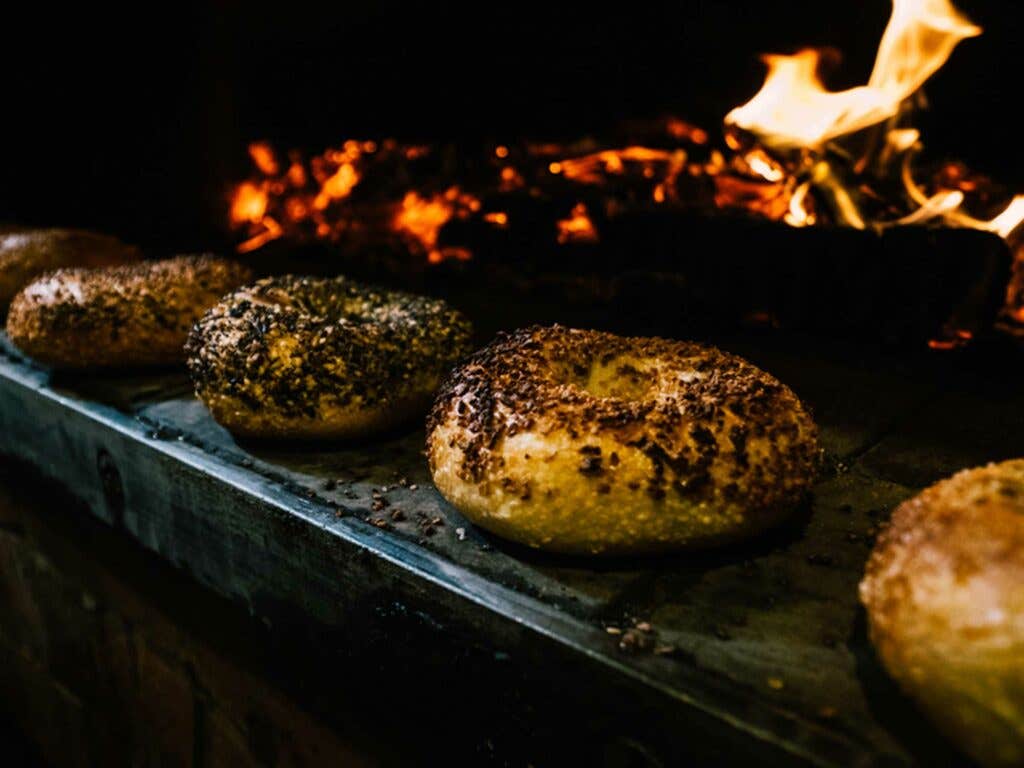
The boards are slid into the oven opposite the banked fire for about three minutes before the bagels are tipped onto the oven’s floor. At that point the baking becomes kinetic. With a peel shaped like an oversized cricket bat, Alpizar prods and turns the bagels toward and away from the fire, more like Neapolitan pizza than anything awaiting a schmear. Occasionally a large bubble will bloom like a mushroom on a bagel’s crust, or a dark spot will develop, adding another layer of texture and flavor. Alpizar pulls the bagels from the oven one by one, and on a busy day, 400 of them may make their way upstairs to the woven baskets behind the counter.
Did these deserve to be near the top of any list of the best bagels in the country? I think so, even if the use of sour dough and a wood burning oven would require an asterisk to be put on any purist’s list. If these were sold in New York, there would be lines around the block for them and Twitter wars over their legitimacy.
But these bagels are sold in Lewiston, which makes them something better: They’re proof that no Best Of list can ever be truly complete or authoritative, because there is always the possibility of brilliance where you least expect it. Proof that even jaded New York writers can still be surprised, and even moved by a simple bagel, whatever sins of snobbishness may lurk in their hearts.
Keep Reading
Continue to Next Story










